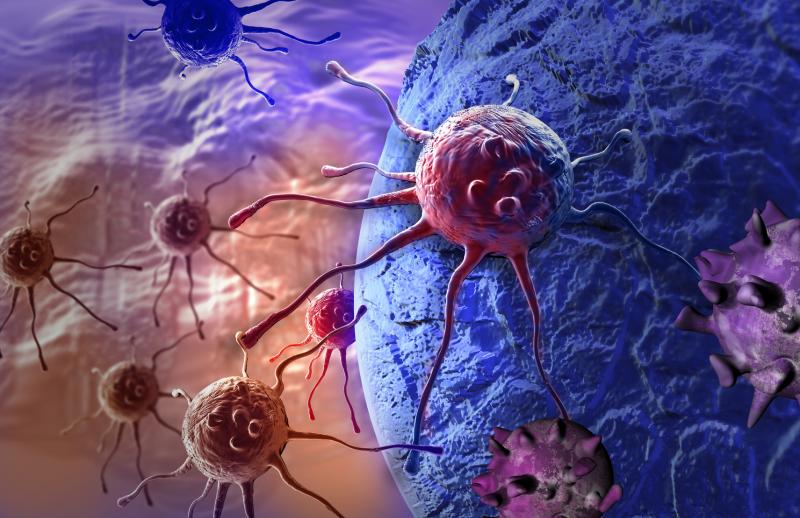 Trojan Horse for cancer cells
Trojan Horse for cancer cellsLike short-term trends, long-term survival in haematologic malignancies appear to be improving, a recent study has found. However, late mortality remains an issue of concern.
Accessing the Surveillance, Epidemiology, and End Results-9 database, researchers assessed the 10- and 20-year relative survival (RS) for patients with haematologic malignancies aged 15 and above. The boomerang method was used as an analytic tool.
The 10- and 20-year standardized RS for multiple myeloma patients jumped from 18.1 percent and 8.0 percent, respectively, in 2002–2006 to 34.9 percent and 19.3 percent in 2012–2016. For those aged 15–64 years, the increase in 10- and 20-year survival was 20.5 percent and 10.8 percent units, respectively.
Similarly, 10- and 20-year estimates for acute lymphoblastic leukaemia jumped from 13.0 percent and 5.6 percent to 29.0 percent and 16.5 percent, respectively. The same was true for acute myeloblastic leukaemia (10-year RS: 14.0 percent to 19.0 percent).
Patients with chronic lymphoid leukaemia saw a major increase in RS, with 10-year survival rate increasing by 9.3 percent units and 15-year survival jumping by 18.6 percent units. This effect was stronger for those aged 15–64 years but nevertheless remained present in younger and older groups.
Similar patterns of improvement were observed for chronic myeloid leukaemia and Hodgkin and non-Hodgkin lymphoma.
“Long-term survival is still low and no plateau in survival was observed for most conditions, suggesting that there may be continued late mortality, either from late effects of the disease or therapy,” the researchers pointed out. Further research to determine the aetiology of these issues and any changes over time in the causes of late mortality as well as to minimize therapeutic toxicity is needed to ensure optimal outcomes.”